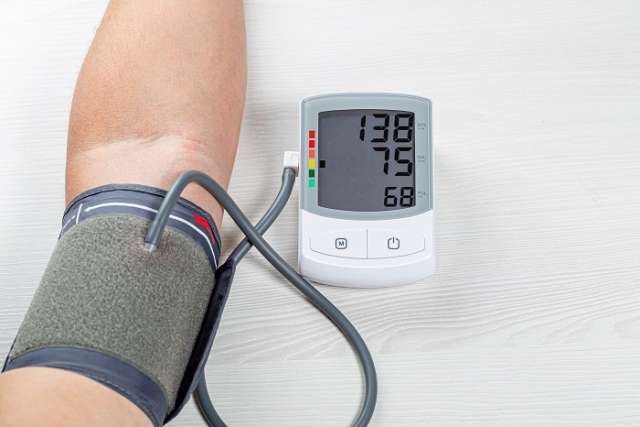New UCLA research suggests that a novel machine-learning technique known as "causal forest" was about five times more efficient than the current clinical practice of treating patients with high blood pressure.
Under current practice, physicians treat patients with high blood pressure under the assumption that people at greatest risk for adverse outcomes and death from a disease benefit the most from lowering blood pressure. In recent years, however, there have been advances in how machine-learning can predict adverse health outcomes due to high blood pressure based on one’s individual characteristics, which allows clinicians to examine the extent to which an intervention’s effects can vary between individuals and thus tailor treatments to the patient’s needs.
Using a technique called “the causal forest,” the researchers found that people at highest risk for cardiovascular disease, such as those with high blood pressure, or hypertension, do not always benefit most from intensive pressure control, said lead author Dr. Kosuke Inoue, who undertook the study while an epidemiology graduate student at the UCLA Fielding School of Public Health and is now an associate professor of social epidemiology at Kyoto University.
“We found that a substantial number of individuals without hypertension benefited from lowering their blood pressure,” he said. “By applying the causal forest method, we found that treating individuals with high estimated benefits provided better population health outcomes than the traditional high-risk approach.”
The study is published in the peer-reviewed International Journal of Epidemiology.
Causal forest is a machine-learning algorithm that estimates the effects of an intervention on an outcome based on the person’s characteristics, allowing for personalized predictions of how each individual will benefit from a given treatment. The standard practice now is to treat all people who are at high risk for adverse health outcomes, such as stroke for people with hypertension, with options that may not necessarily benefit everyone – for instance, some people with high blood pressure may not benefit from blood pressure lowering medications because they may have other underlying health issues that are more important risk factors for cardiovascular disease, such as diabetes.
For the current study, the researchers used data from nearly 10,700 people from the Systolic Blood Pressure Intervention Trial (SPRINT) and the Action to Control Cardiovascular Risk in Diabetes Blood Pressure (ACCORD-BP) trial. They also estimated the effect of these approaches using data on 14,600 U.S. adults from the National Health and Nutrition Examination Surveys (NHANES) 1999–2018.
SPRINT had shown that intensive systolic blood pressure treatment, aimed at keeping pressure below 120 mmHg, was associated with a lower risk of cardiovascular disease events and all-cause mortality among people without diabetes. As a result, the diagnostic blood pressure threshold was lowered from 140 mmHg to 130 mmHg, which led to about half of the U.S. population being diagnosed as hypertensive. The ACCORD-BP trial, which focused on people with diabetes, found no evidence that intensive blood pressure control was associated with a lower probability of adverse cardiovascular events.
The researchers applied the causal forest method to participants’ data of these two trials to predict what the effect of individualized treatment to reduce adverse cardiovascular outcomes would have been at 3 years. They then compared the performance of the two approaches against each other; the high-benefit approach (targeting individuals with high treatment effect) vs. the high-risk approach (targeting individuals with high risk such as high blood pressure and a high cardiovascular risk score).
They found that nearly 80% of people with blood pressure readings at or above 130 mmHg benefited from the intensive blood pressure control. The high-benefit approach outperformed the high-risk approach by nearly 8 percentage points. The results were the same when transported to the NHANES data.
The study does have some limitations, the researchers write. For instance, they could not rule out individuals’ characteristics that might affect treatment; baseline characteristics were self-reported by the participants, which could have led to measurement errors; and the study design, rather than social and physical mechanisms, might have affected the results due to differences between the SPRINT and ACCORD-BP trial criteria.
While there is a need for more research, the findings suggest that the high-benefit approach, which targets individuals with high estimated health benefits of lowering blood pressure, has the potential to substantially increase the effectiveness of treatment and improve population health outcomes, and could change the current treatment strategy in clinical practice and political decision-making, the researchers note.
“The findings of our study shed light on a powerful machine learning algorithm that enables us to identify individuals who would benefit the most from strict blood pressure control, which can be a crucial element in achieving the precision medicine,” said senior author Dr. Yusuke Tsugawa, an associate professor of medicine in the division of general internal medicine and health services research at the David Geffen School of Medicine at UCLA and of health policy and management at the Fielding School.
Susan Athey of Stanford University was an additional co-author.
This study was supported in part by Japan Agency for Medical Research and Development (JP22rea522107). The study authors were also funded by the National Institute of Diabetes and Digestive and Kidney Diseases (F99 DK126119); National Institute on Minority Health and Health Disparities (R01MD013913); the National Institute on Aging (R01AG068633); the Golub Capital Social Impact Lab; Schmidt Futures; the Sloan Foundation; Office of Naval Research (N00014-17–1-2131); the Mercatus Center; Microsoft Research; the Japan Society for the Promotion of Science (21K20900 and 22K17392); the Japanese Endocrine Society; Meiji Yasuda Life Foundation of Health and Welfare; and the Program for the Development of Next-generation Leading Scientists with Global Insight (L-INSIGHT) sponsored by the Ministry of Education, Culture, Sports, Science and Technology in Japan for work not related to this study.



